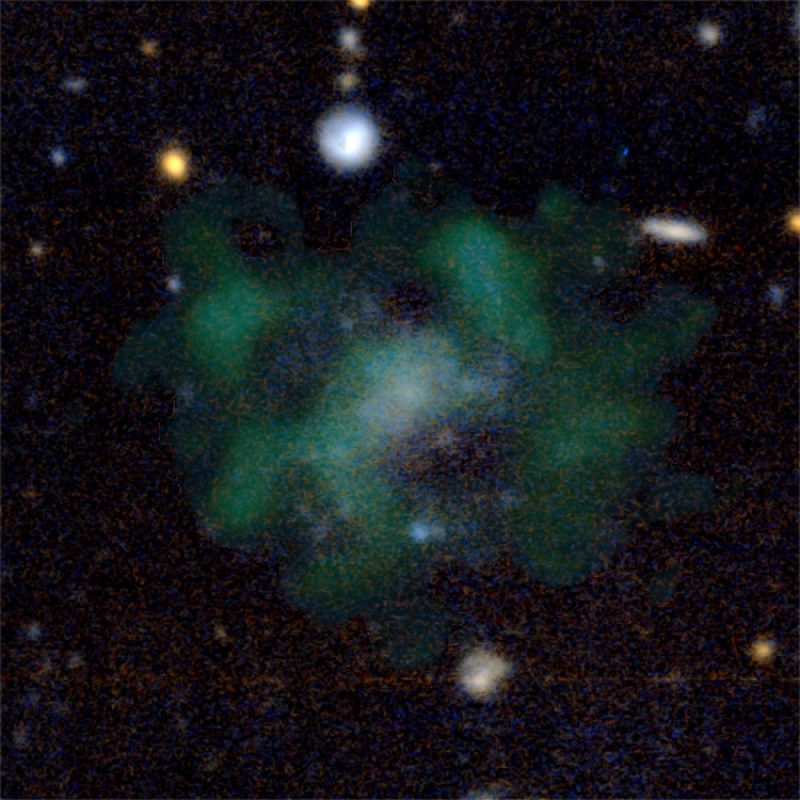
Dark matter is integral to modern cosmology, the science of our universe over time. Astronomers think that galaxies – the great star islands that are the building blocks of our universe – start to form due to accumulations of dark matter. So dark matter is thought to pervade our universe. That’s why, in 2019, after an international team of astronomers found six galaxies with no dark matter, colleagues told them to measure again and they’d find it. And measure they did. For example, they spent 40 hours examining galaxy AGC 114905 with the state-of-the-art Very Large Array observatory in New Mexico. But, still, there was no sign of dark matter. What does it mean? No one knows.
The team announced their confirmation of the dark-matter-free galaxy on December 6, 2021.
The researchers submitted their findings to the peer-reviewed journal Monthly Notices of the Royal Astronomical Society, which accepted it for publication on November 30, 2021. The preprint is available at arXiv.
The 2022 lunar calendars are here. Order yours before they’re gone!
A galaxy without dark matter
Galaxy AGC 114905 lies 250 million light-years away. Although it’s similar in size to our own Milky Way galaxy, AGC 114905 earns the classification of ultra-diffuse dwarf galaxy. This is because of how dim it is, with a thousand times fewer stars than our Milky Way galaxy.
When astronomers took their observations, made between July and October of 2020, and mapped them, they confirmed earlier observations. They plotted the rotational speed of the gas – how fast the gas moves around the center of the galaxy – at different distances from the center of the galaxy in a graph. This kind of graph is called a rotation curve. For nearly every galaxy measured in the universe, its rotation curve reveals a need for the presence of dark matter, matter that keeps the galaxy together even though its gas rotates “too fast” in the outer regions. But in AGC 114905, no dark matter is necessary to explain the motions of the gas.
Pavel Mancera Piña of University of Groningen and ASTRON, the Netherlands, said:
This is, of course, what we thought and hoped for because it confirms our previous measurements. But now the problem remains that the theory predicts that there must be dark matter in AGC 114905, but our observations say there isn’t. In fact, the difference between theory and observation is only getting bigger.

Why doesn’t the galaxy have dark matter?
So why doesn’t AGC 114905 show any evidence of dark matter? One explanation could be that a large galaxy nearby stripped away the dark matter from the ultra-diffuse dwarf galaxy. Only there’s a problem with the nearby large galaxy theory, Piña explained:
There are none. And in the most reputed galaxy formation framework, the so called cold dark matter model, we would have to introduce extreme parameter values that are far beyond the usual range. Also with modified Newtonian dynamics, an alternative theory to cold dark matter, we cannot reproduce the motions of the gas within the galaxy.
The answer to the missing dark matter isn’t a nearby galaxy, and AGC 114905 doesn’t fit the two models that explain the formation of structures in the universe. There is one more possible explanation. If the angle at which they believe they are viewing the galaxy is not accurate, it could skew the results. Tom Oosterloo of University of Groningen and ASTRON, the Netherlands, said:
But that angle has to deviate very much from our estimate before there is room for dark matter again.

Examining other candidate galaxies
The team is going back to the original batch of six galaxies that showed no dark matter and are choosing another one to analyze. If it, too, continues to reveal no traces of dark matter, it will make their case even stronger.
Astronomers have previously discovered galaxies without hints of dark matter, though these objects remain rare anomalies.
Bottom line: Astronomers completed a 40-hour long observation of an ultra-diffuse dwarf galaxy and discovered no traces of dark matter.
Source: No need for dark matter: resolved kinematics of the ultra-diffuse galaxy AGC 114905











